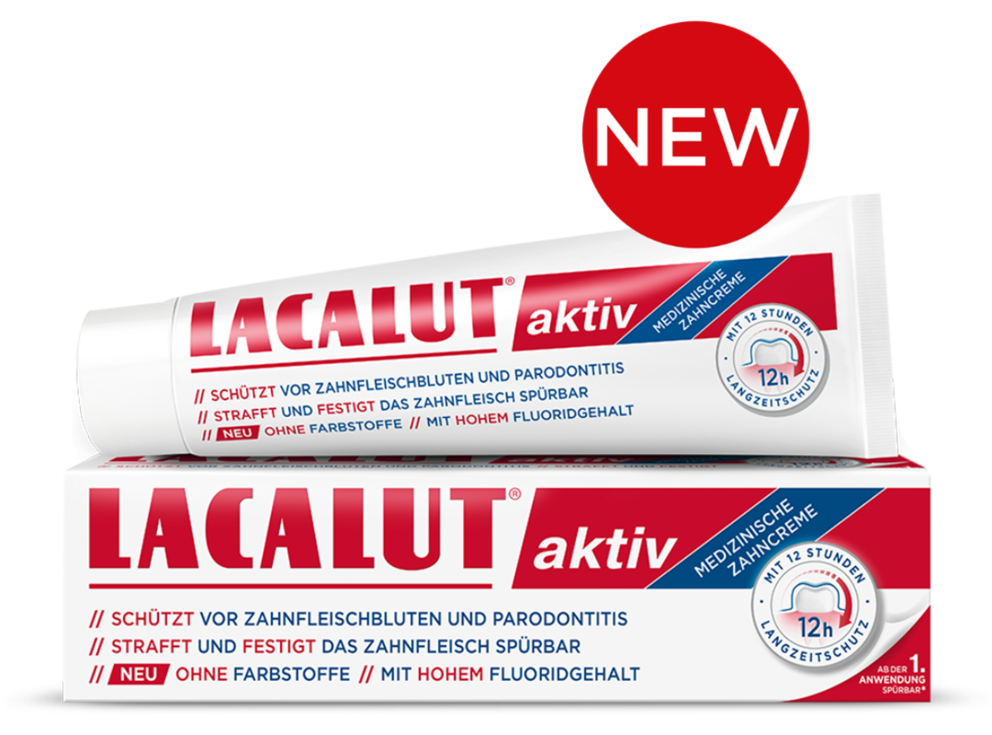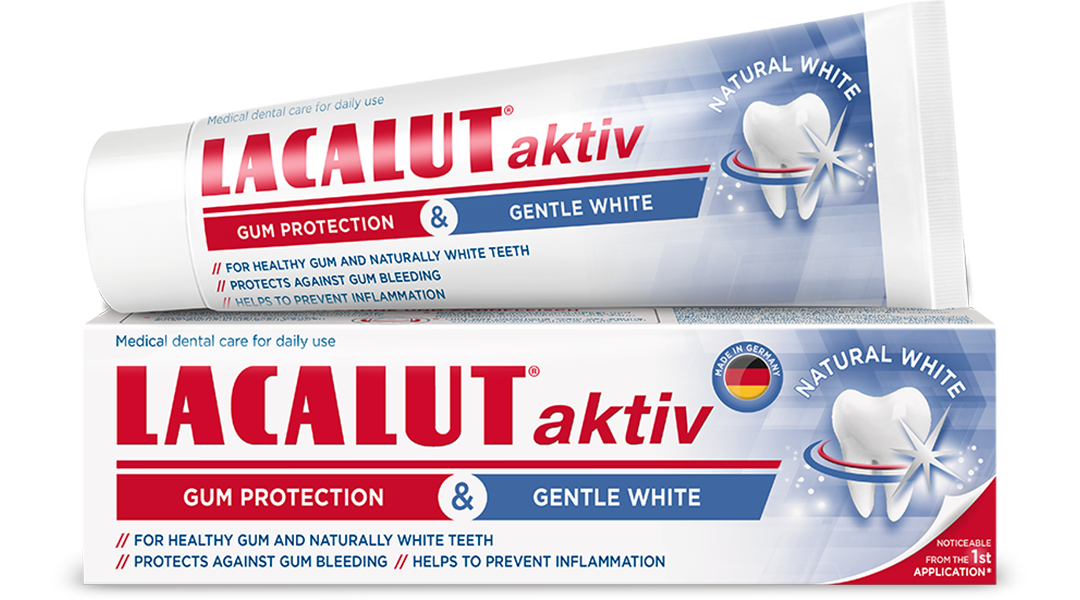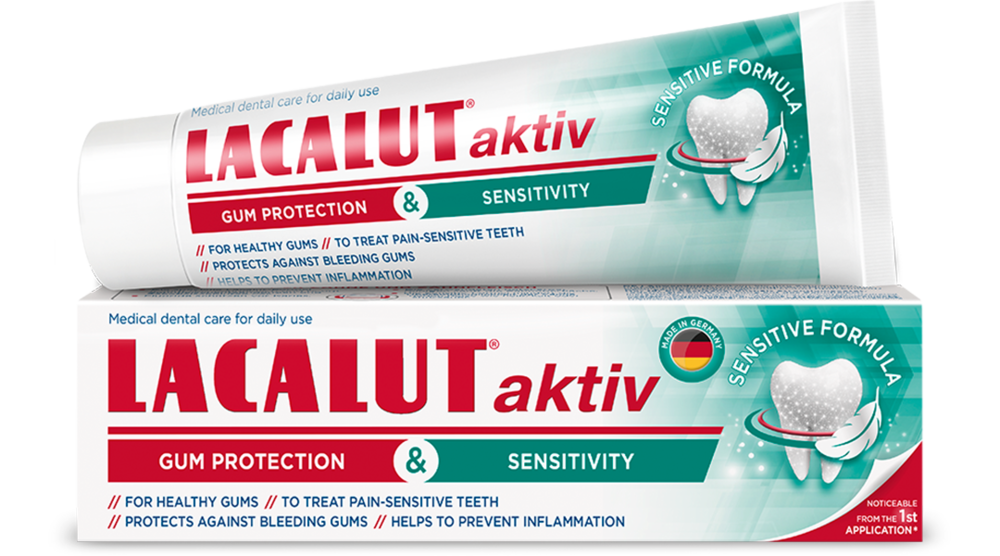TEETH PROBLEMS
Tartar - Causes, prevention and treatment
Most people only notice tartar when their dentist tells them they need to clean more carefully. With careful dental care, tartar can be significantly reduced in the long term.
Tartar – an unwanted companion
Tartar is the term used to describe the solid deposits on teeth that build up over time due to mineralized plaque. It is usually yellow-white in color; in extreme cases it can even be brown or black. Everyone has tartar, it cannot be completely prevented and it usually grows over time. As the word tartar suggests, these deposits are very hard and, unlike plaque, cannot be easily removed by brushing the teeth or rinsing the mouth. You will read in a moment why it should be removed regularly.
Our product recommendations
How tartar is formed
Plaque is the precursor to tartar. Plaque builds up on the surface of the teeth every day and can usually be easily removed by brushing the teeth. Plaque that has not been completely removed hardens after about two days and can no longer be removed with just water and toothpaste. The minerals contained in the saliva are fixed in the plaque and make it hard. As a result, tartar builds up sooner or later, depending on how prone one is to it, even within just a few days. In general, the back sides of the necks of the teeth, the edges of the gums and the spaces between the teeth are particularly affected by tartar, that is, precisely these areas that receive less attention than others when cleaning the teeth
Various types of tartar
Dentists distinguish between two types of tartar depending on where it is deposited. The most common type is called hyperulitis. This is found above the gum line, usually on the back side of the lower front teeth and on the outer side of the upper molars. It also usually occurs in the places where saliva is secreted by the large salivary glands, that is, on the back of the lower jaws and on the molars of the upper jaw. This type of tartar develops relatively quickly. The second type is called subgingival calculus, which is located in the gum pockets and is dark brown to black in color. Subgingival calculus grows quite slowly but adheres more strongly to the teeth than supragingival calculus
Risks: if tartar remains unaffected
Although tartar itself is not dangerous, it can have unexpected consequences for individuals. Tartar that builds up at the edge of the gums promotes inflammation of the gums (gingivitis), which can then lead to inflammation of the entire dental system (periodontitis). This, in turn, can promote tooth decay and thus threaten dental health. Besides, heavy tartar does not promote an image of a well-groomed appearance.
Oral hygiene: tartar reduction through preventive care

The best prevention is thorough and regular oral hygiene. This means brushing your teeth at least twice a day for 2–3 minutes and brushing with a toothpick and/or interdental brush at least once a day. In this context, the cleaning technique and care are also important, because simple "rubbing" only removes a small part of the plaque. A toothpaste with fluoride, such as our LACALUT® aktiv toothpaste, is highly recommended, because the fluorides, which reach the dentition through the toothpaste, create a kind of protective film on the surface of the tooth
The acids are thus directly neutralized and the enamel hardens and thus becomes less sensitive. Stone can be minimized in the long term with this very simple and inexpensive preventive measure because where there is no plaque, stone cannot form.
Treatment of stone at home is sometimes questionable.
Some websites list home remedies for tartar, but these are not always harmless. It is often advised to remove tartar with baking soda. Its crystals are said to remove plaque by rubbing, i.e. like a kind of emery. This process can be extremely irritating and harmful to the gums and tooth enamel, and can cause permanent damage to areas that are actually healthy. The situation is similar when it comes to using vinegar and lemon juice as a home remedy, as their acid not only tastes bad, but can also attack enamel.
A harmless home remedy that has been used for centuries is “oil pulling”, for example, using coconut or olive oil. The goal is to increase saliva production, bind bacteria and harmful substances, and then flush them out. Regular “oil pulling” can slow plaque formation, and therefore there will be less material that can turn into tartar.
This is how it works:
Put one to two tablespoons of oil in your mouth and swish it through your teeth for about ten minutes. Caution: as this oil/saliva mixture contains many bacteria and germs, it should never be swallowed. Spit it out on a kitchen towel and throw it away with your household waste. Then rinse the mouth with plenty of clean water.
Remove tartar with a professional teeth cleaning.

At the latest when the hard areas on the teeth become visible, it is time for a visit to the dentist. Since you cannot remove tartar on your own, regular dental examinations and cleanings are essential. Most insurance companies cover the cost of professional teeth cleaning (PED) once a year. The tartar is removed with the help of suitable tools, such as ultrasound or special digging. This is usually painless unless the surrounding gums are already inflamed and very irritated. We strongly recommend that you do not attempt to remove tartar yourself, as there is a risk of injury to the gums, tooth enamel or oral mucosa.
Above all, professional teeth cleaning eliminates the symptoms, not the causes. Careful, daily tooth cleaning is the most important factor when it comes to minimizing tartar in the long term. Therefore: always clean your teeth thoroughly!


